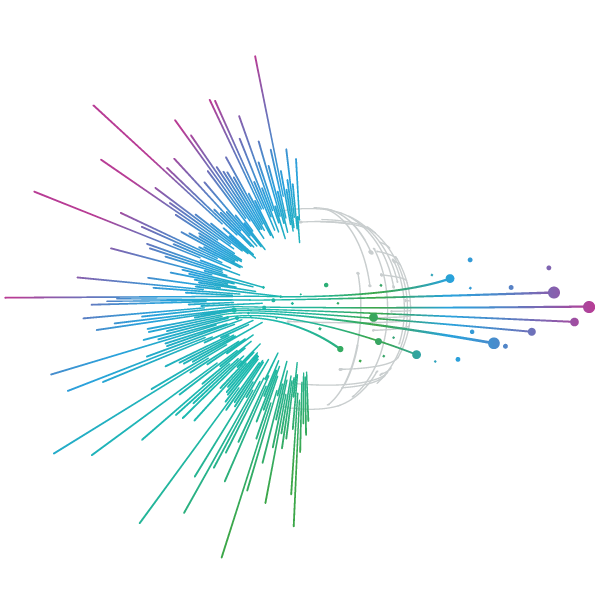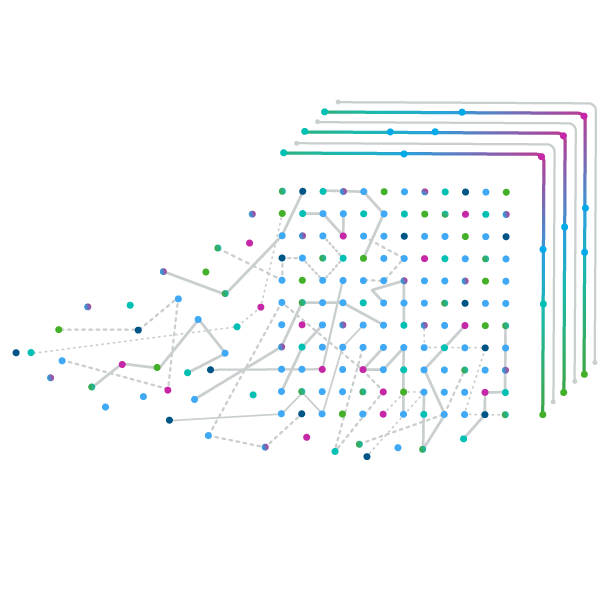Focus oncology development on the patient, manage trial complexity, and increase predictability and speed.
Report Summary
Latest estimates indicate that the number of patients affected by cancer will increase dramatically through the middle of the century across all regions of the world. At the same time, the innovation ecosystem that discovers, develops, and delivers breakthrough therapies in entire new areas of science is operating near peak levels. Rising incidence, increasing numbers of treated patients, and the resulting expected growth in spending in this area will trigger an array of complex challenges over the next several years that are reflected in the trends highlighted in this report.
Our research profiles latest available data on cancer incidence and survival, the current state of research and development activity in oncology, including key mechanisms, targets and cancer types being investigated. We also look at metrics of clinical development productivity. As more novel cancer medicines are launched, patient access and use of those drugs vary widely around the world and by some measures the gaps between the science and patients is expanding. Trends in the use of novel mechanisms in specific cancer types are reported here as well as current expectations for how spending dynamics will play out over the next five years.
Key findings:
- Cancer incidence is expected to rise significantly through 2050, particularly in lower-income countries, potentially increasing by more than 12 million new cases annually to 32 million.
- Global spending on cancer medicine increased to $223 billion in 2023, $25 billion more than 2022, and is projected to reach $409 billion by 2028.
- In 2023, 25 oncology novel active substances (NASs) were launched globally, making a total of 193 since 2014 – however, large geographic variations exist in availability of these medicines.
- More than 2,000 new oncology clinical trials started in 2023 with novel modalities and significant promise for cancer treatment, including cell and gene therapies, antibody-drug conjugates, multispecific antibodies, and radioligand therapies.
- Cancer treatments have increased 9% annually since 2019 but the pace of bringing novel therapies to patients is uneven due to differences in biomarker testing rates, adoption of novel therapies and lack of infrastructure capacity to deliver some of the most advanced therapies.
Other findings:
Novel oncology mechanisms, especially cell and gene therapies, ADCs, and multispecific antibodies have risen to 25% of trial starts

- Oncology research and development has seen an increasing focus on targeted drugs with innovative mechanisms of action for treatment of cancers over the last decade.
- Trials for hematological cancers declined 17% in 2023, while clinical development activity for solid tumor cancers remained unchanged after a peak in 2021.
- PD-1/PD-L1 checkpoint inhibitors, which saw significant growth over the last decade, have begun to taper off in recent years, indicating a crowded market and switch to even newer targeted molecules.
A total of 125 oncology NASs have launched globally in the past 5 years and 259 over 20 years with large geographic variations

- Globally there were 125 oncology NASs in the past five years, nearly double the 67 in the prior five years, while the number of launches by key geographies shifted considerably.
- China accelerated from just 24 NAS in 2014–2018 to 83 in the last five years and passed the U.S. to be the country with the most novel oncology drug launches.
- Notably, China had 37 NAS in the past five years that have not launched in other markets to date, beginning a pattern of domestic-first or domestic-only innovation not previously seen.
The use of checkpoint inhibitors has risen rapidly in major markets with variations on a per capita basis and some lagging

- The wide adoption of PD-1/PD-L1 checkpoint inhibitors reflects their strong efficacy across a range of solid tumors, including several with tissue-agnostic approvals triggering their use with biomarker testing results.
- Usage has varied considerably across countries, with the U.S., Germany, and France using two to three times more of these drugs per capita than the UK and South Korea.
- Many of the major European countries have highly similar rates of usage to other developed markets, including the Nordic countries.
Cancer medicine spending rose to $223Bn globally in 2023 and is expected to reach $409Bn by 2028

- Cancer medicine spending rose to $223Bn globally in 2023, with 74% focused in the major developed markets (the United States, EU4+UK and Japan), which has remained stable over the last five years.
- Spending growth in these major developed markets is expected to be similar in the next five years to the last five, with the five-year CAGR through 2028 expected to be 11-14% for both the U.S. and EU4+UK and 4–7% for Japan.
- U.S. spending on oncology has risen from $65Bn in 2019 to $99Bn in 2023, representing 45% of global spending, and is expected to grow to nearly $180Bn in 2028.
Related solutions
Explore our end-to-end, full service clinical development capabilities including Therapeutics expertise, Development Planning, Phase I early clinical development, Phase IIb/III and Phase IV Trials, Regulatory Submission and Post-Launch Studies.
IQVIA is using vast quantities of data in powerful new ways. See how we can help you tap into information from past trials, patient reported outcomes and other sources to accelerate your research.

























